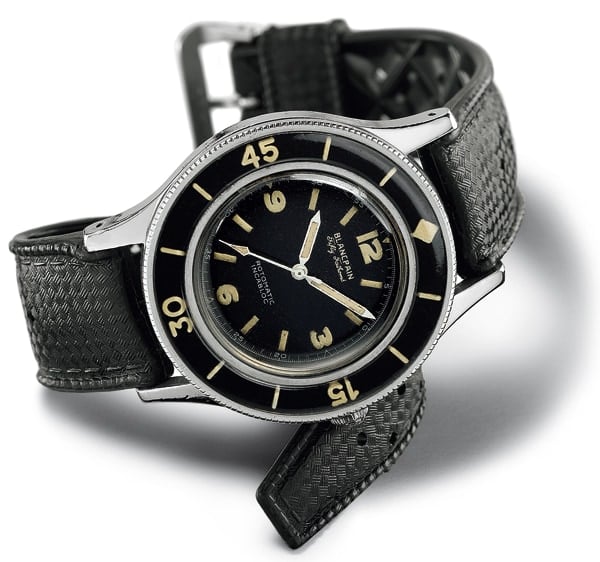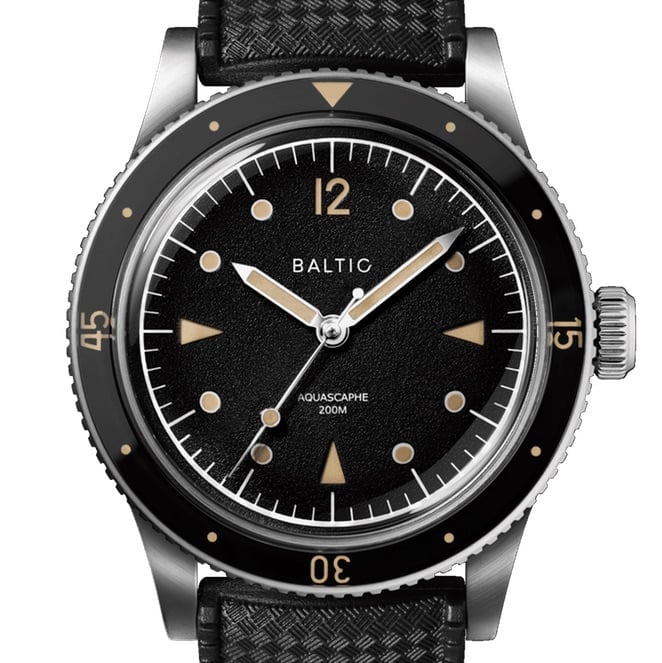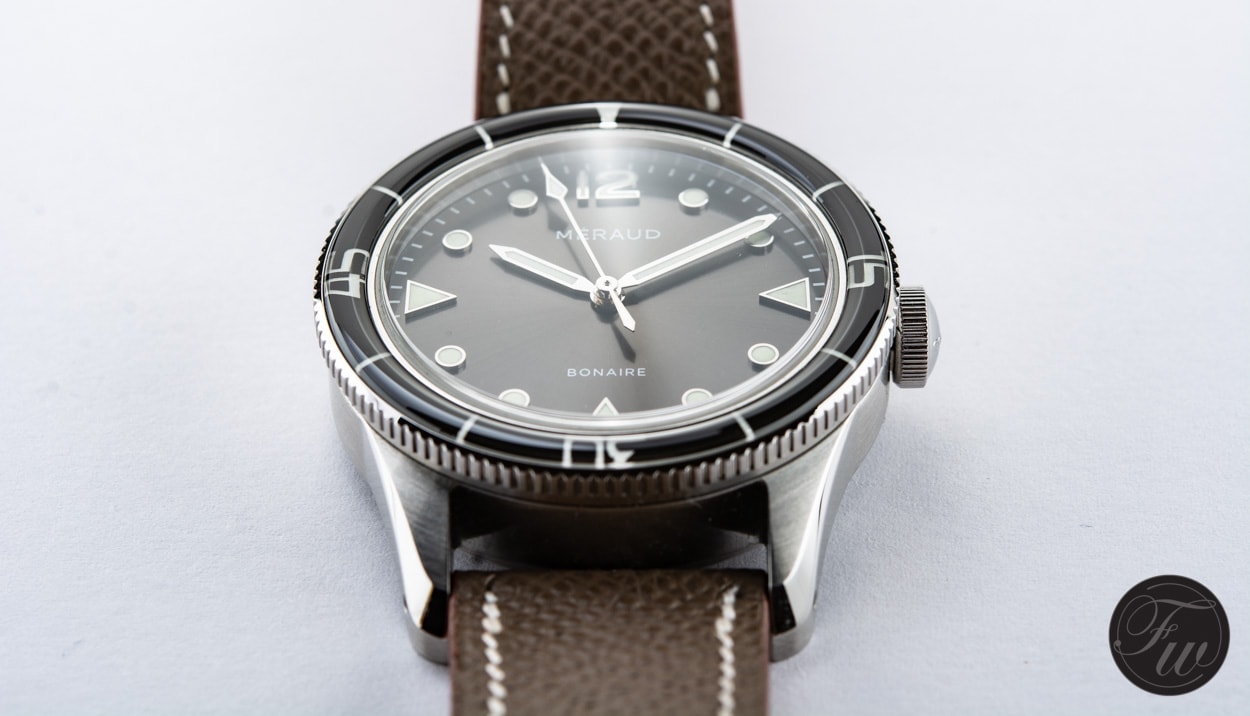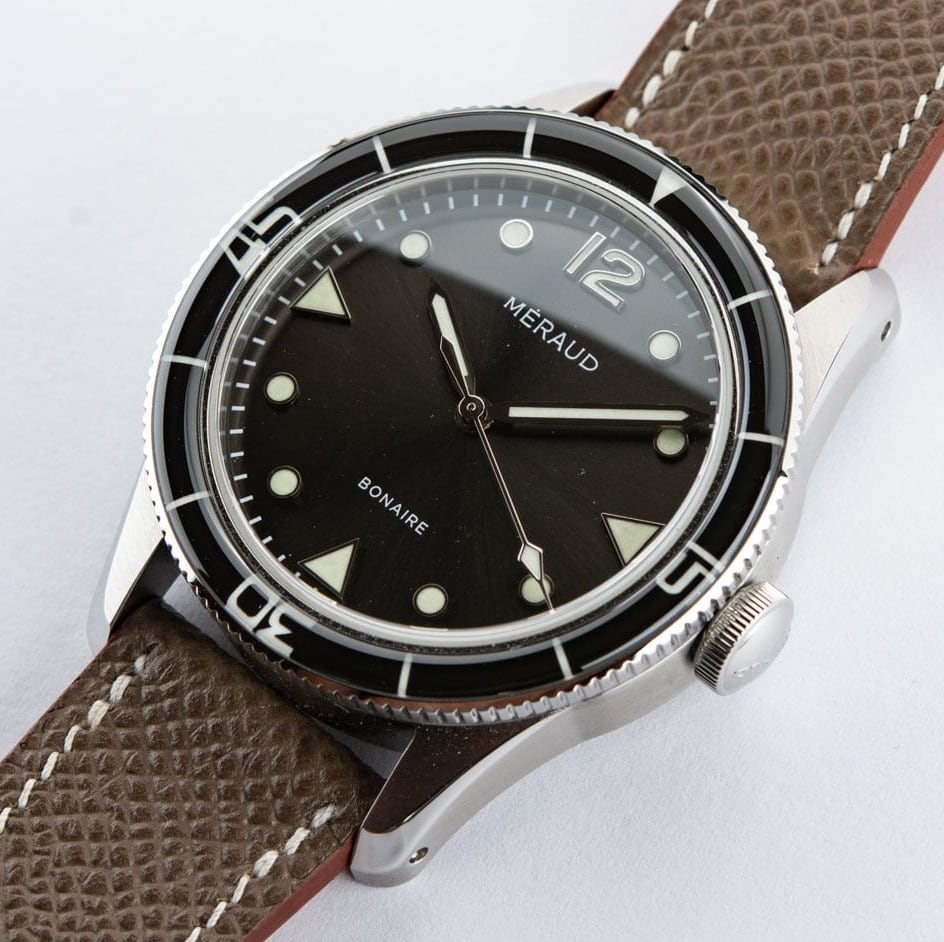You Asked Us: Méraud Bonaire or Baltic Aquascaphe?
This week we received a rather self-evident question from Paul. He’s looking for a vintage-inspired modern diver’s watch. As a diver, he would actually love to use the watch in water, however, wants to use it as a daily wearer as well. Two obviously similar watches came to his mind, the Méraud Bonaire and the Baltic Aquascaphe.
You Asked Us: Which one to choose the Méraud Bonaire or Baltic Aquascaphe?
Here’s Paul’s question in full:
From: Paul
Subject: “You asked us”
Hey guys,
I’ve been watching your “you asked us” section and really enjoying it, I thought I’d see if I can get a question answered too.
Méraud Bonaire or Baltic Aquascaphe?
I noticed you have reviewed both of these watches, and am just stunned that two extremely similar watches such as these are being released at the same time. Is it actually possible that these almost identical (excluding subtle differences) watches were conceived without one being a copy of the other?
I’m looking for a modern homage to the diver’s watches of old. I am an actual diver so being able to use this in the water is key but I’d love to be able to wear it out just as easily. Practicality is such as functionality, looks and comfort are key to me but I’d like this watch to suit multiple occasions as well.
Given that if you add the steel band to the Baltic they both cost almost the same amount which should I buy?
Thanks in advance,
Paul
A reminder of iconic Blancpain diver’s watches
When looking at both watches, one way or the other, they remind me of Blancpain diver’s watches from many years ago. Upon closer look, however, there’s very little which they actually have in common, so it must be the overall looks or character which they reflect. Straight hands, a clean dial, and a rather prominent diver bezel are amongst the similarities. The bezel has a certain 3D-look and lacks the, later often seen, fine-dividing of the first 20 minutes.
Blancpain, however, often used a very different diamond shaped top-marker on its bezel and in the dial in its Fifty Fathoms models. The Aqua Lung would have been more similar in that way, with a triangle and a 12, however mostly sports a date indication and hence lacks the cleanliness in its dial. Both the Méraud and the Baltic do not use numerals in their dials, except for the 12.
Are the Méraud and Baltic quite similar indeed?
Agreed, both watches very much breathe the same atmosphere. An atmosphere as explained above, quite similar to diver’s watches from the fifties and sixties of the last century. With their case size of 39 mm they might be slightly larger than their vintage counterparts, but overall they have this same feeling. However, I have to admit that, within this similar feeling, I do see a lot of differences.
The differences are in the details
A watch as such is a very complex product where details often make the difference between admiration and rejection. I can imagine that the Méraud Bonaire and the Baltic Aquascaphe both appeal because of their general appearance. However, I think it will be someone’s personal preferences of the difference in details which will make the decision which one to choose. Let’s list the most important here below.
The bezel
Both bezels have more or less the same layout. A triangle at the top, 15-30-45 showing at the cardinal points, and index divisions in between. The Méraud here leans more towards the Blancpain visualization with index lines, Baltic divides the 10-minute indications with index dots.
As well, both bezels have the mentioned 3D-feeling, with numerals and indexes shown under a layer of sapphire glass, not printed on top of the bezel. The main difference though is the shape of the bezel. The Méraud bezel is rather domed, while the bezel of the Baltic is almost flat. For me personally, this would make it for the Méraud +1.
The sapphire crystal
Exactly the opposite to the bezel, here we see the glass of the Méraud being almost flat, although in fact it is very slightly single (top) sided domed. The Baltic has a whopping double domed sapphire crystal, which simulates a vintage domed acrylic crystal. This would be a +1 for the Baltic I guess.
Although I do like a double domed sapphire crystal, I’m well aware that it wouldn’t suit a watch with a heavily domed bezel like the Méraud. So it really is one or the other.
The dial, sandwich or applied indexes?
Ow, another very difficult choice! Both watches are three dial variations. The Méraud Bonaire with a metallic-blue, metallic-grey or a glossy-black dial. The Baltic Aquascaphe is available with a metallic-blue dial with gilt printing, a mat-black dial with silver or a mat-black dial with cream accents.
So the glossy-black Méraud and mat-black with cream dial versions are the easiest to compare, the main differences between these dials here are their construction. The Méraud sports thick applied index dots and triangles, as well as an applied 12. All fully loaded with cream-coloured Super-LumiNova. The index dots of the Baltic, as well as the 12, are painted on the dial, however, the cardinal triangles are cut-out and visible as a layer of Super-LumiNova below the dial. I just can’t choose here. This is something one would want to see in real life. I’m sure I would want a black dial with cream Super-LumiNova, however, I really would have to see the difference between glossy and matt, as well as between the applied markers and sandwich dial. That makes +0 for both watches.
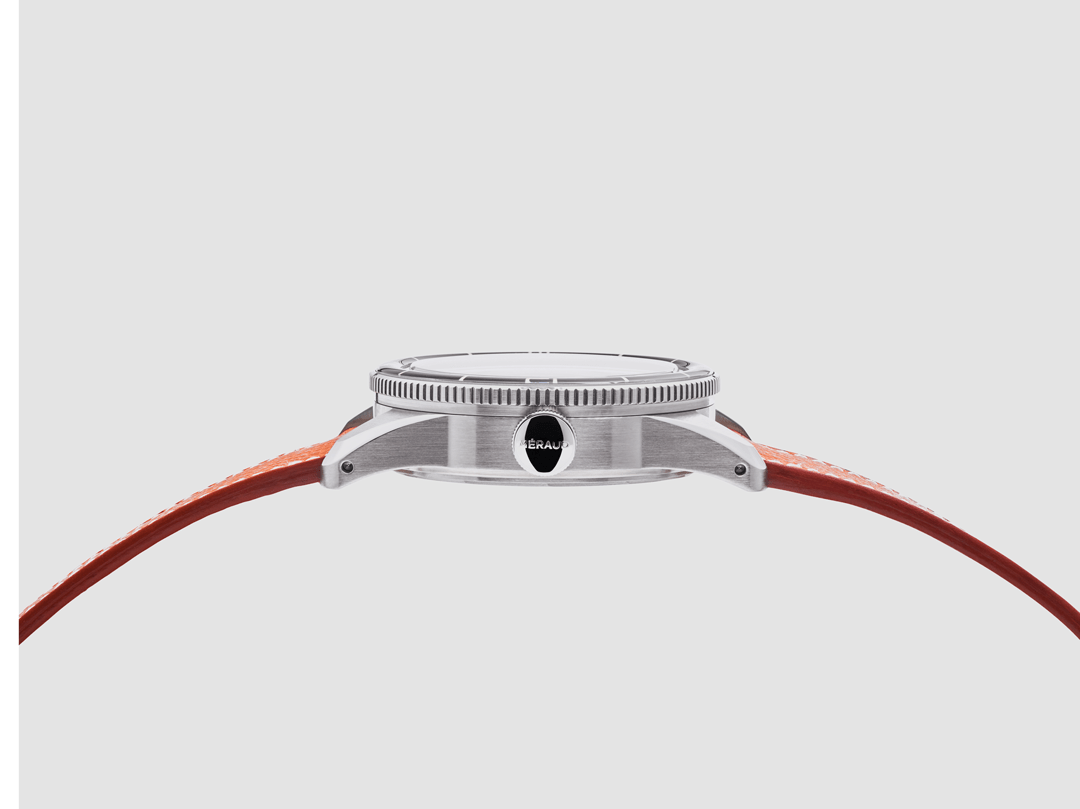
The Méraud seems to have a rather tuna-can shaped case design, although the lugs bend off to the sides beautifully
Remarkable difference in case design
As can be seen, the lugs of the Méraud are somewhat more complex than the lugs of the Baltic. In short, the Méraud lugs look more like Omega lugs while the Baltic seems to have lugs more equal to those of Rolex. The latter lugs have a design rather flat on the top and sides, while the other has an extra facet angling away from the side to the top.
The case-side of the Méraud looks somewhat higher, because of which it gets a slightly more tuna-can shaped body. Visually the Baltic seems thinner. Their height is respectively 12,5 and 12 mm so the difference is just an illusion. I tend to prefer the Méraud because of its lugs, while I would prefer the slimmer look of the Baltic. Both watches +1 here for me.
Swiss STP caliber 1-11
Both watches sport a nicely embossed and engraved solid case back, on both adequately a figure of a diver can be seen. I wouldn’t prefer one over the other here. Behind these case backs it’s a different story. Méraud chose to use a Swiss made STP caliber 1-11. The STP 1-11 is a direct replacement movement for the well known ETA 2824-2, as is, for instance, the Sellita SW-200. Some even prefer the STP 1-11 over the ETA 2824-2 because of its extra jewel (26 in total) which supports the barrel bridge. Although the STP 1-11 is a direct replacement for the 2824-2, it’s not an exactly similar movement, some parts will not be exchangeable.
Japanese Miyota caliber 9039
Baltic relies on another well-known movement, the 24 jewels Miyota caliber 9039. I’m sure Miyota, being part of the Citizen Group, knows very well how to build reliable movements. Both movements, the STP and Miyota run a frequency of 4 Hz (28.800/h) and have over 40 hours of power reserve (44/42). The Miyota with -10/+30 sec/day seems to have lesser accuracy specifications, as STP specifies -0/+15 sec/day. It may be of course that a Miyota 9039 will run within the specs of STP as well, but it’s not promised.
Movement differences
The Miyota 9039 is a somewhat slimmer movement with a height of 3,90 mm compared to the 4,60 mm of the STP. The diameter of both movements is equal with 25,6 mm. Even not specifically for it being ‘Swiss Made’ I would prefer the STP movement here. The extra jewel (at an important point in its construction, which will add to the longevity), and the better accuracy specifications alone would make me choose for this movement. As well, although we won’t see it because of the solid case back, the STP movement has a nicer finish than the Miyota. Additionally and certainly in Europe, I think it would be easier to find a general watchmaker to service the STP 1-11 than the Miyota 9039. Here’s my +1 for the Méraud.
A plus for both brands is that, although they use a movement with a date function, this function will be disabled by their movement suppliers. So no ghost or dead position while setting the crown, and no click during midnight without a changing date in sight.
Conclusion
As I mentioned at the beginning of this article, personal preferences for details of these watches will determine which watch one should buy. If I’m adding my points, the results are 3 points for the Méraud Bonaire and 2 points for the Baltic Aquascape. The domed bezel and STP movement are the main reasons to choose for the Méraud. The double-domed sapphire crystal of the Baltic would have been the reason to chose for that watch. But I really have to see both dials in real life before being able to make a good choice. I guess I like the applied numerals certainly as much as a sandwich dial, however, the glossy black compared to mat-black, for instance, might make me think otherwise.
There’s one last thing I like to mention, I’m not a huge fan of the name ‘Aquascaphe’. It’s a bit too much homage to my taste. ‘Aqua Lung’ combined with ‘Bathyscaphe’ seems just a bit to easy for me. On the other hand, it certainly wouldn’t keep me from buying this watch if it would be the watch of my choice.
Except for the reviews we did on the Méraud and Baltic watches here and here you could head over to the following websites to learn more about them:
Méraud Bonaire – www.meraud-watches.com
Baltic Aquascaphe – www.baltic-watches.com



